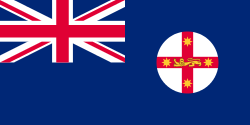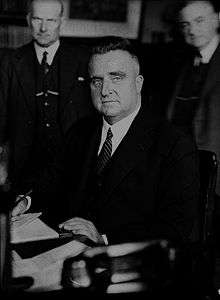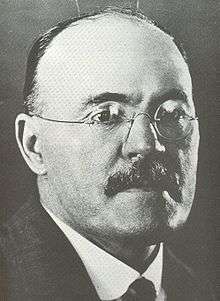New South Wales state election, 1932
New South Wales state election, 1932

|
| 11 June 1932 (1932-06-11) |
|
|
|

|
| Legislative Assembly after the election |
|
|
The 1932 New South Wales state election was held on 11 June 1932. This election was for all of the 90 seats in the 30th New South Wales Legislative Assembly and it was conducted in single member constituencies with compulsory preferential voting. It was a landslide victory for the UAP/Country Party coalition of Bertram Stevens, which had a majority of 42 in the Assembly.
The 29th parliament of New South Wales was dissolved on 18 May 1932 after the Governor, Sir Philip Game dismissed the Premier Jack Lang (see the crisis of 1931–32) and commissioned Bertram Stevens to form a caretaker government. Lang's government had a majority of 20 at the time of the dismissal.In this election, the Australian Labor Party (NSW) and the Federal Executive of the Australian Labor Party, which had separated in 1931 (see Lang Labor), endorsed separate candidates. The ALP (Federal) had candidates in 43 seats but none were elected. The parties were re-united in 1936. The campaign was marked by mass Labor Party public meetings including, allegedly, the largest public meeting in Australian history when Lang addressed 200,000 people at Moore Park on 5 June.
Key dates
| Date |
Event |
| 18 May 1932 |
The Legislative Assembly was dissolved, and writs were issued by the Governor to proceed with an election. |
| 25 May 1932 |
Nominations for candidates for the election closed at noon. |
| 11 June 1932 |
Polling day. |
| 23 June 1932 |
Opening of 31st Parliament. |
Results
|
New South Wales state election, 11 June 1932
Legislative Assembly
<< 1930 — 1935 >> |
| Enrolled voters |
1,418,141[1] |
|
|
| Votes cast |
1,336,827 |
|
Turnout |
96.40 |
–1.46 |
| Informal votes |
30,260 |
|
Informal |
2.21 |
–0.04 |
| Summary of votes by party |
| Party |
Primary votes |
% |
Swing |
Seats |
Change |
| |
Labor (NSW) |
536,897 |
40.16 |
–14.89 |
24 |
–31 |
| |
United Australia |
491,124 |
36.74 |
+6.24[2] |
41 |
+18 |
| |
Country |
175,862 |
13.16 |
+3.60 |
23 |
+11 |
| |
Labor |
56,641 |
4.24 |
+4.24 |
0 |
±0 |
| |
Country–UAP (joint endorsement) |
23,020 |
1.72 |
+1.72 |
2 |
+2 |
| |
Communist |
12,351 |
0.92 |
+0.13 |
0 |
±0 |
| |
Independent Country |
9,696 |
0.73 |
+0.48 |
0 |
±0 |
| |
Independent UAP |
9,088 |
0.68 |
+0.61[2] |
0 |
±0 |
| |
All for Australia |
3,806 |
0.28 |
+0.28 |
0 |
±0 |
| |
Independent Labor |
1,915 |
0.14 |
–0.40 |
0 |
±0 |
| |
Women's Candidate |
704 |
0.05 |
+0.05 |
0 |
±0 |
| |
Independents |
15,723 |
1.18 |
+0.01 |
0 |
±0 |
| Total |
1,336,827 |
|
|
90 |
|
- 1 Of the 1,465,008 enrolled voters, 46,867 were enrolled in three electorates that were uncontested at the election (one UAP-held and two Country-held).
- 2 The swing figures for the United Australia Party (and independent UAP candidates) are calculated using the Nationalist Party's figures at the previous election.
References
Melbourne University Press Melbourne ISBN 0-522-84700-5 OCLC 34416531
See also


